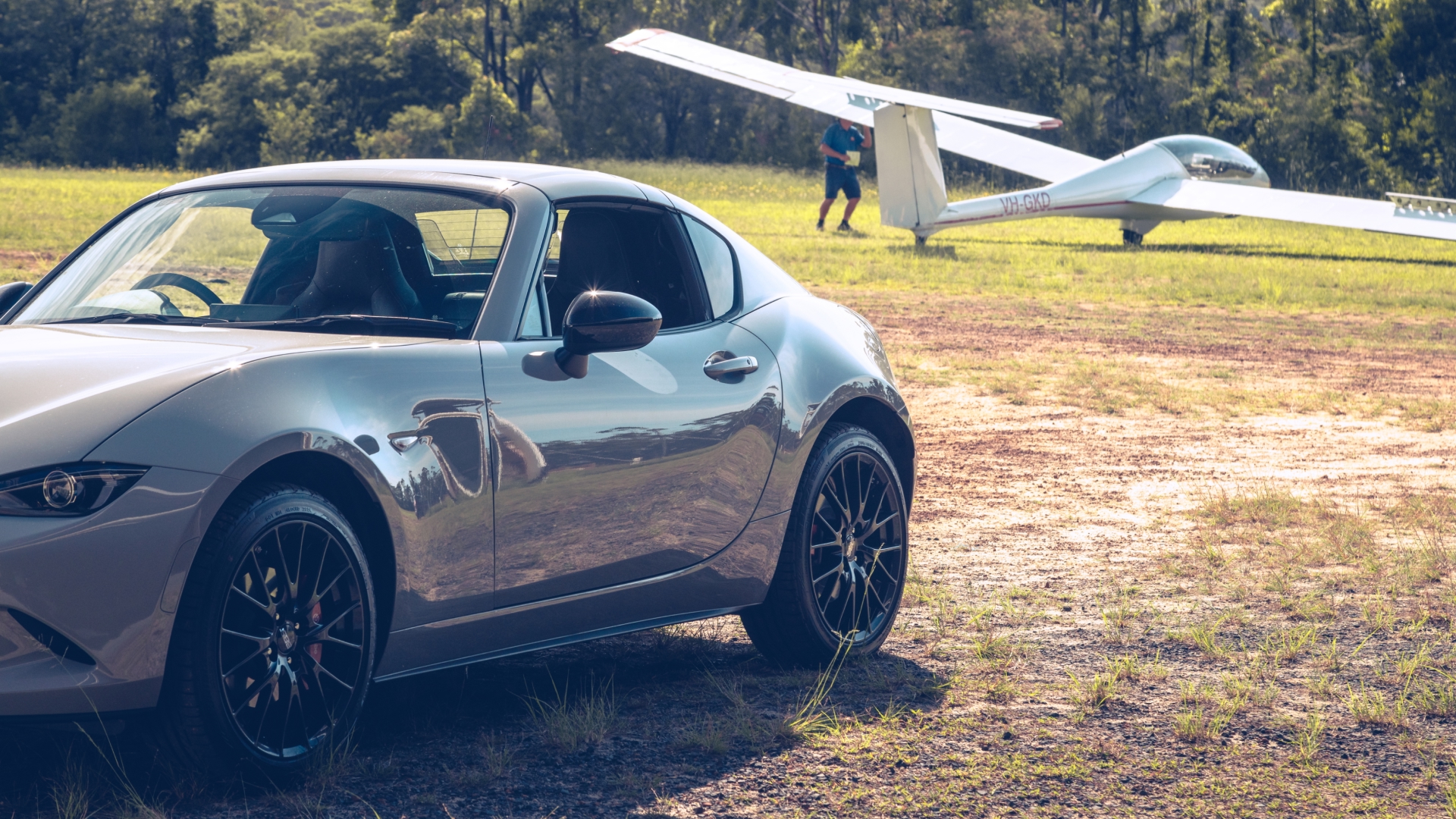
MAZDA MX-5
Gliding for Zoom
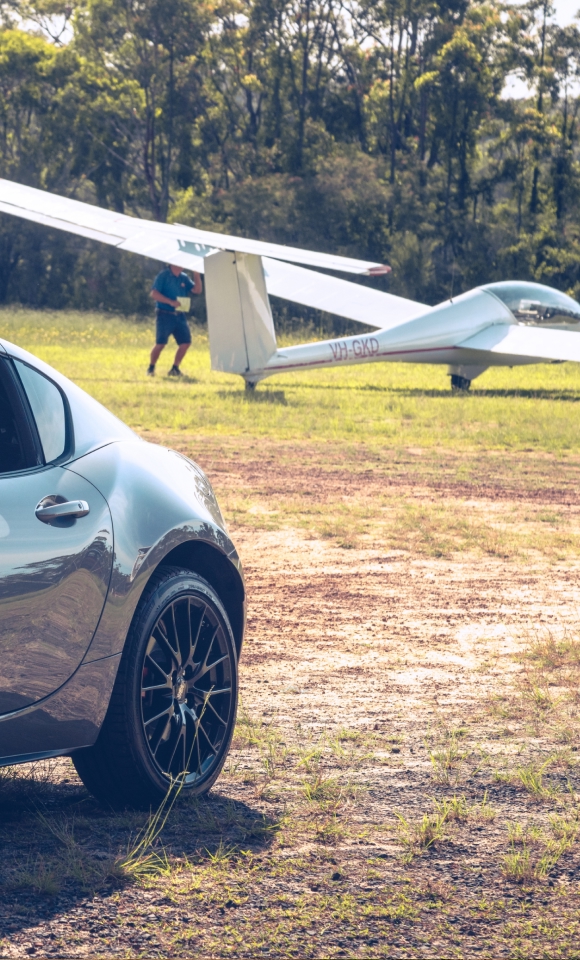
MAZDA MX-5
Gliding for Zoom
By Stephen Corby
Should I mention the garden hose that’s scaring me? It’s snaking across the runway in front of us, and slightly beneath the single and slim-looking wheel our glider is going to use to take off.
It seems rude, or uppity, to point it out, and surely my pilot, Todd Chapman, sitting behind me and preparing to hurl us both into the air, would have noticed it?
I look longingly to my left at the Mazda MX-5 parked next to the airfield, wishing I could climb back into its cabin - a space that feels cozy and cosseted, until you’ve climbed into the truly tiny cabin of a PW6 glider.
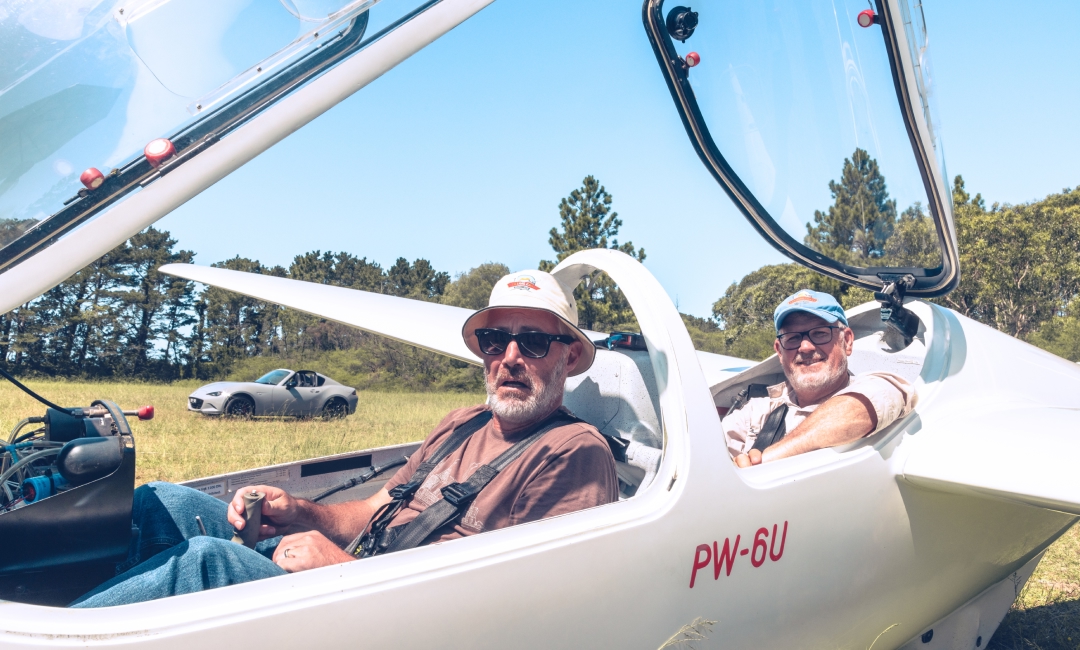
The idea had seemed so wise and the risk/reward ratio favourable when my flying-mad photographer friend suggested it. Let’s take a spry sports car that relies on its light weight to provide uplifting performance and a sense of fairly flying over the road to a gliding club, where we can experience another machine that values lightness and can carve through the air with ease, while mixing joy and joie de vivre.
Having spent the morning watching other gliders (some of the single-seater ones weigh less than 200kg and seem to float before they even take off) being “winch launched” into the air, I’m having some doubts. My greatest fear was that, compared to driving the Mazda up the wonderful windy roads to Mangrove Mountain, north of Sydney, where the Central Coast Soaring Club resides, gliding might be a bit of a yawn.
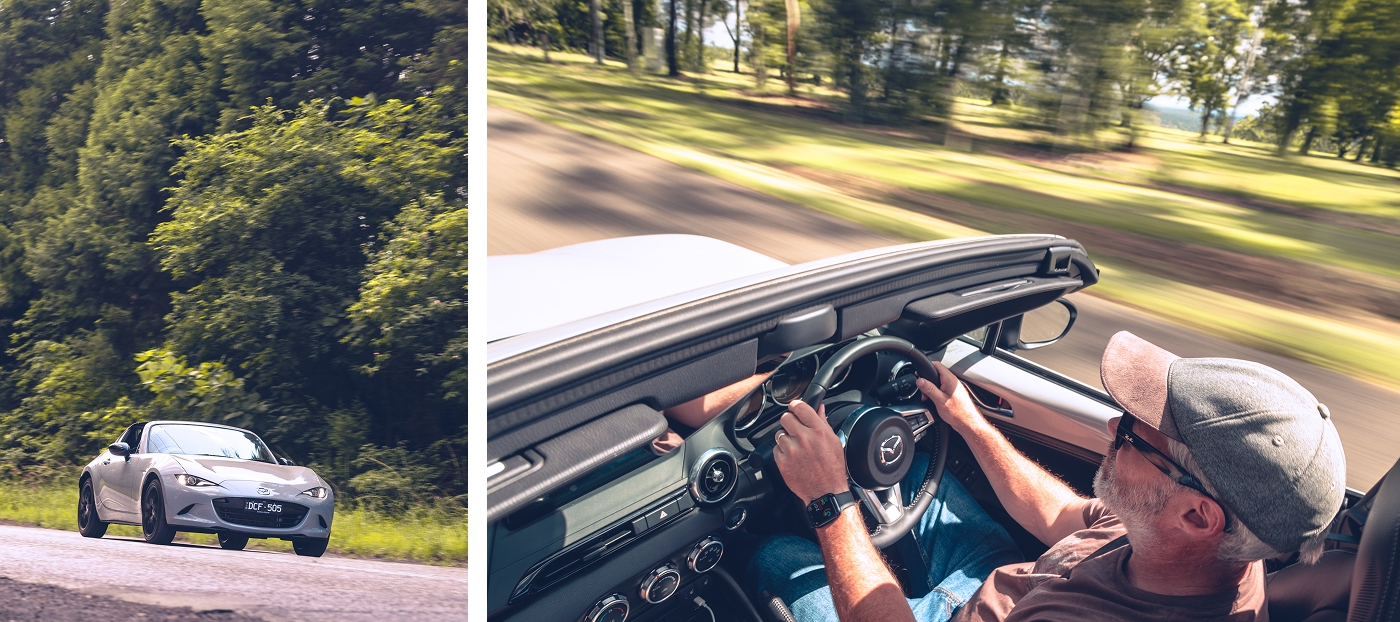
I thought we’d be gently pulled into the air by a proper plane, with an engine, before being unhitched to float back to air like a feather.
But no. It turns out winch launching is the original, and still common, way to send a glider aloft, and that it involves, in this case, a very long cable being attached to a specially constructed winching machine, powered by an old and very loud V8 engine. The engine then acts like a small child running with a string and a kite behind them.
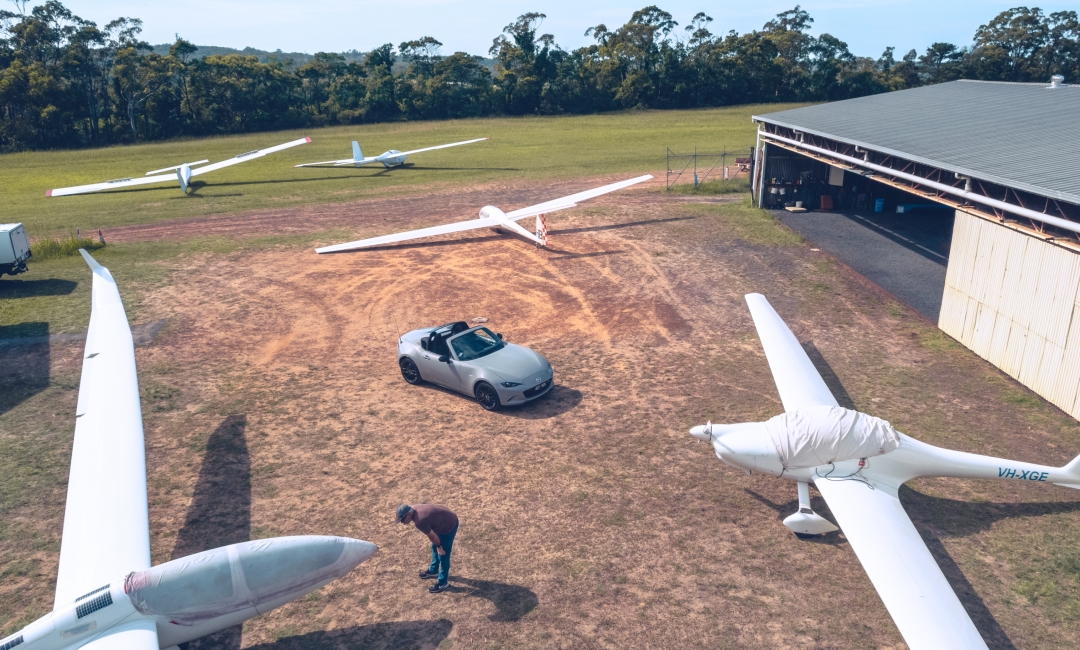
The glider, and the humans in it, are the kite, the V8 is the sprinting child and the result is something that has to be seen to be believed. The single-seater gliders in particular launch with such vertiginous violence that gliding starts to look like a sport for the kind of thrill seekers who find bungee jumping too tame.
Strapped into my glider, I’m asked whether I’d like to have a go at the controls once we’re airborne, and, if so, how much I know about flying.
“I’ve watched both Top Gun several times?” I whimper.
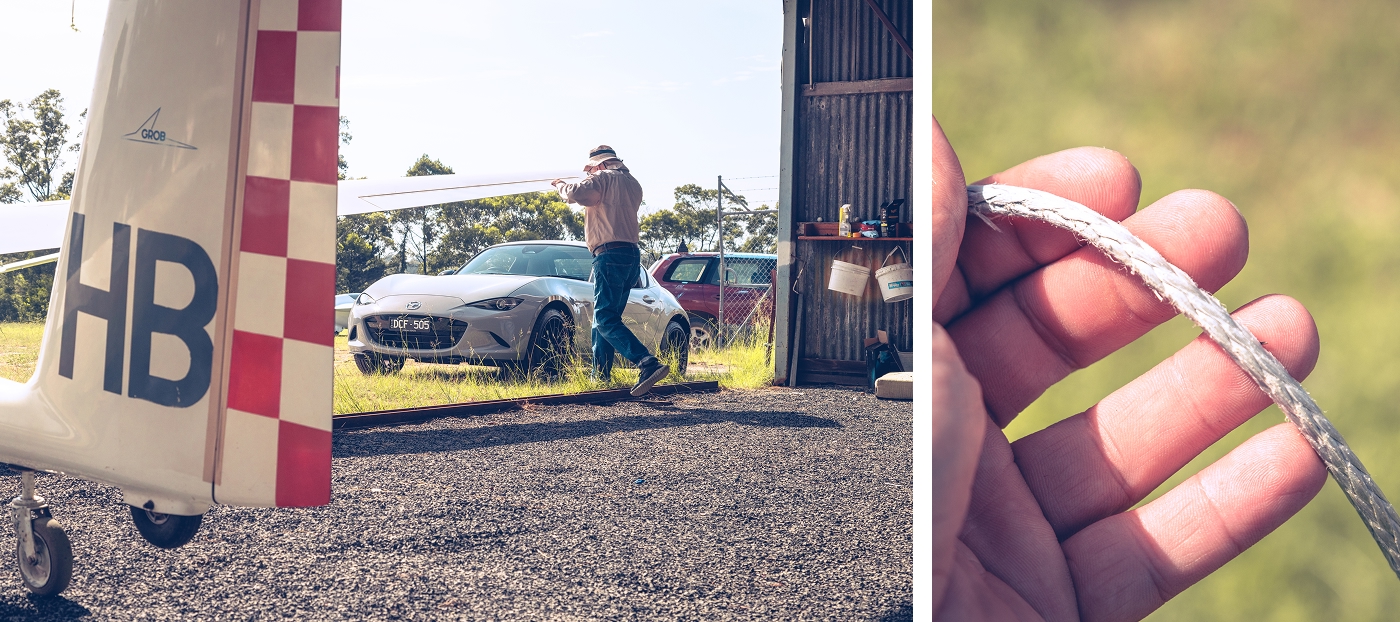
“Oh, well that’s perfect, because a winch launch is the closest thing you can get to being fired off an aircraft carrier; we’ll be going from zero to 100km/h in two seconds,” Todd seems thrilled to tell me.
I decide to point out the garden hose, in the hope of delaying things, but Todd tells me it’s actually just a homemade sheath for the cable we’re attached to, presumably to stop it from catching fire thanks to friction.
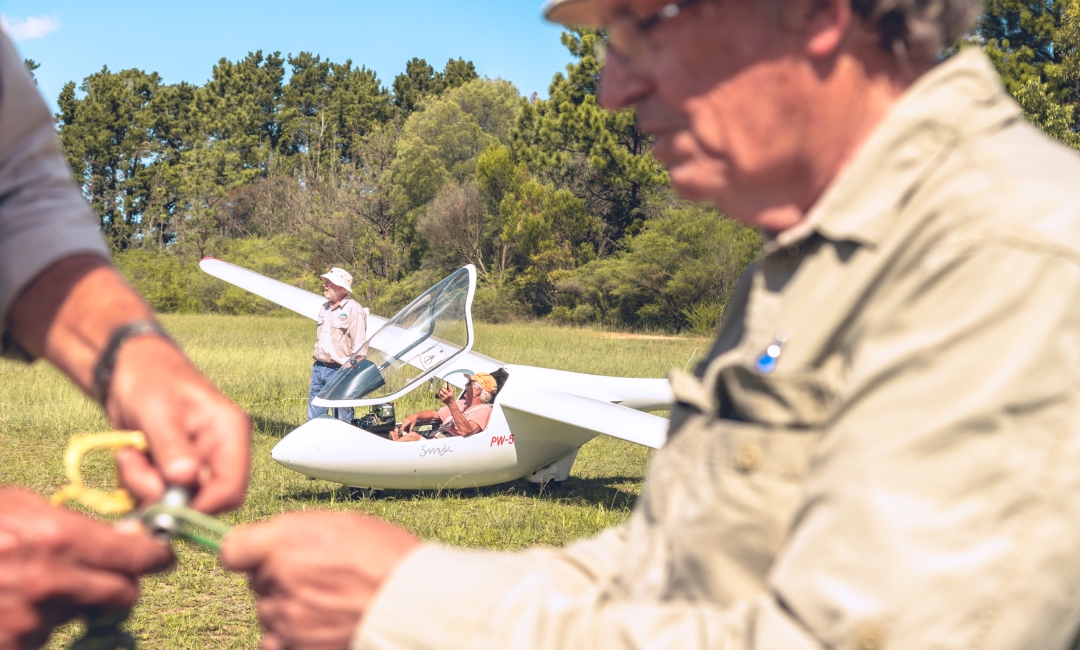
If the drive up the mountain in the MX-5 was to be my last, at least I’d enjoyed it immensely. My photographer is, fortunately, a small man because properly light-weight roadsters like the famous Mazda perform better the fewer kilograms you are carrying. I remember driving one with a very heavy fellow journalist around a race track once, and then ditching him and going out again with predictably more performance available.
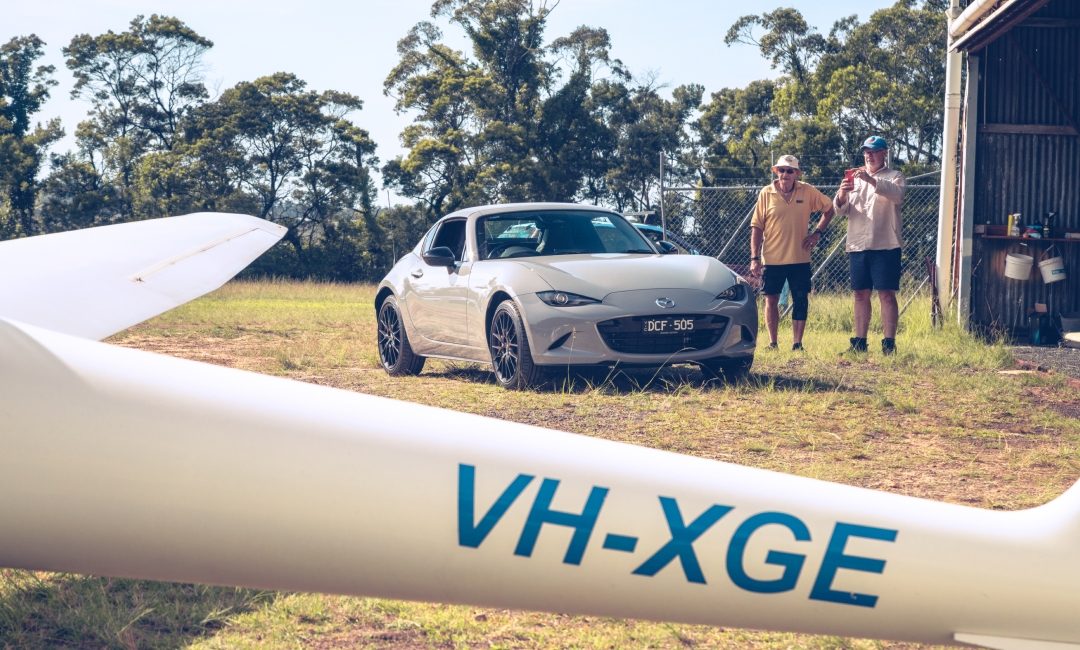
The MX-5 RF I’m driving is fitted with one my favourite gearboxes in the world, a swift, light and superb six-speed manual, which makes every drive an involving event. It combines beautifully with the 2.0-litre, four-cylinder engine, which makes 135kW, 205Nm and a soaring song of revs when you’ve got the folding hard-top roof down and you’re making it spin all the way up to 7000rpm, where maximum power arrives.
This taut, tight and go-kart-like sports car weighs just 1063kg and it’s that lightness of being that makes it such a hoot on winding roads, changing direction effortlessly and holding its line through bends while delivering pure feeling through the steering wheel.
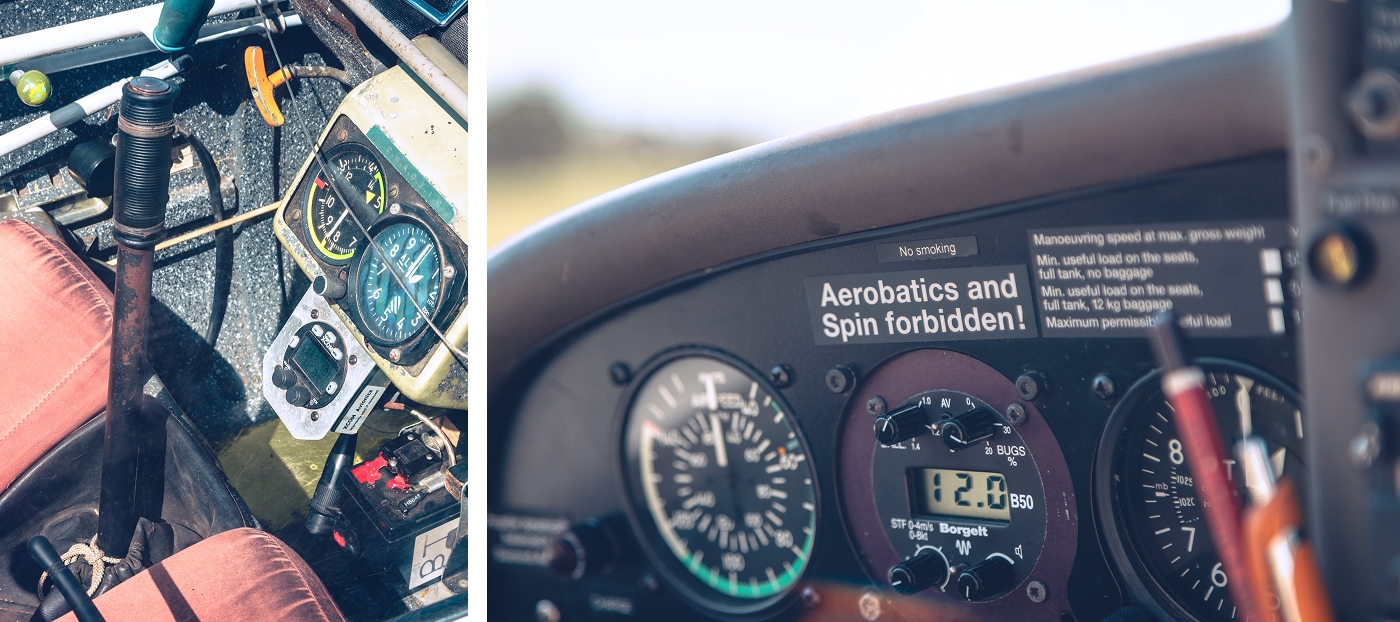
As fast as the Mazda felt earlier that day, it was not as disturbingly thrusty as my winch launch, which saw us battering and bustling across a grass paddock (it’s not really a runway if it doesn’t have any concrete, surely, so this place puts the ‘field’ in airfield).
What is even more incredible than the speed is the vertical climb. Within seconds of leaping away, Todd is pulling back hard on the joystick and we are climbing at 45 degrees, just as the sounds coming out of my woo hoo-ing throat are rising similarly.
All fear is gone and I’m rapt in the rush, as we climb hundreds of feet, seemingly straight up, in seconds. The glider I’m in weighs just 370kg without Todd and I in it, and has a wing span of 16.4m. Those figures really allow for prodigious progress.
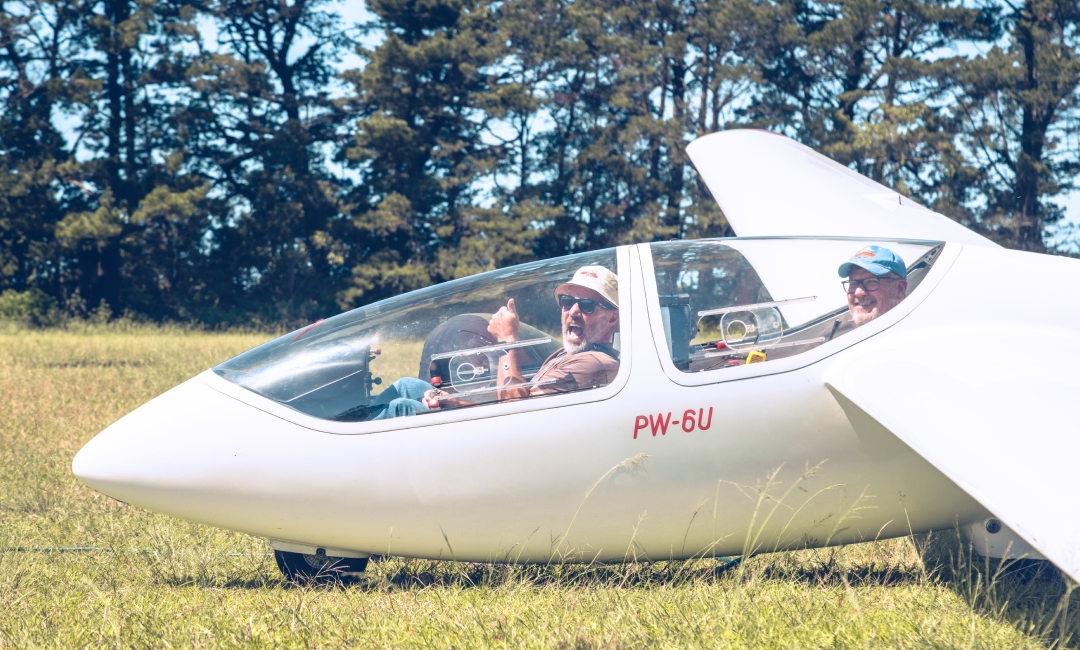
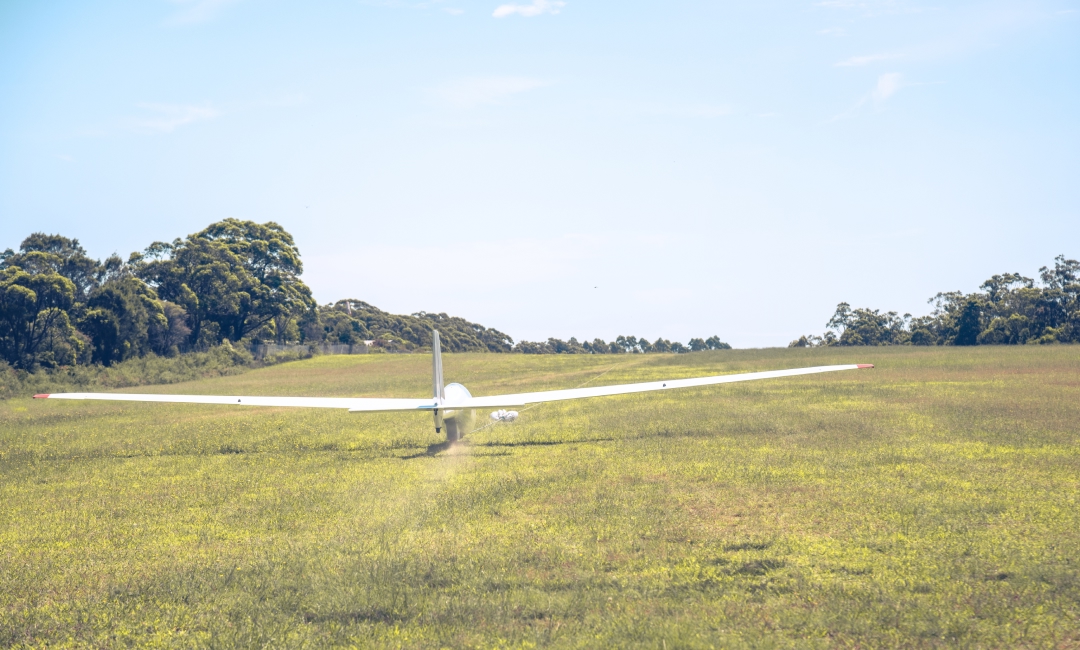
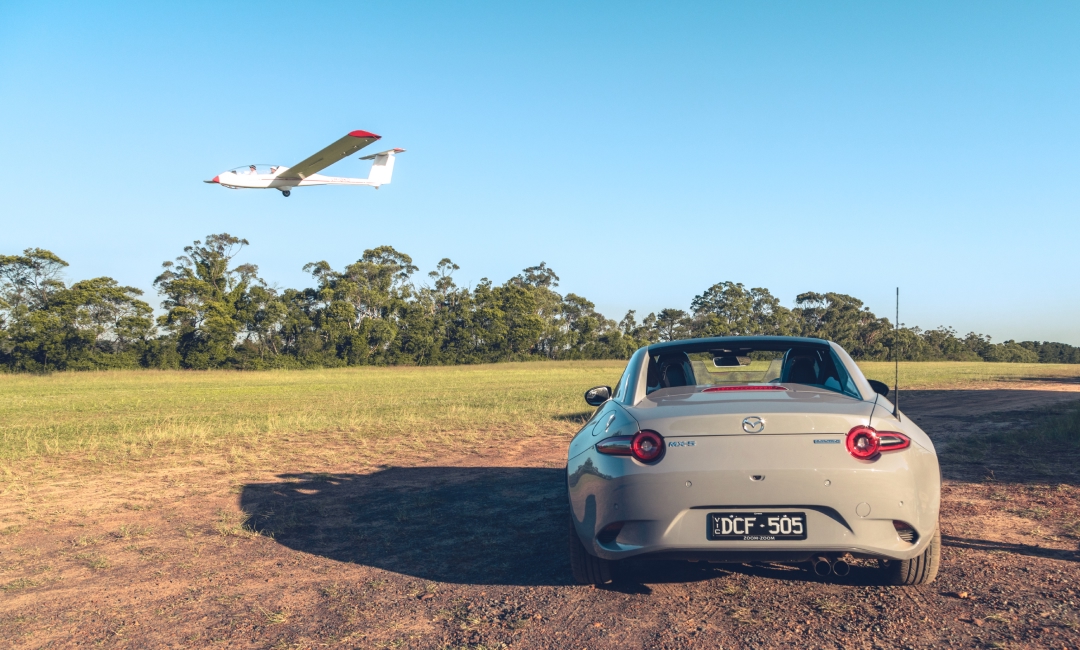

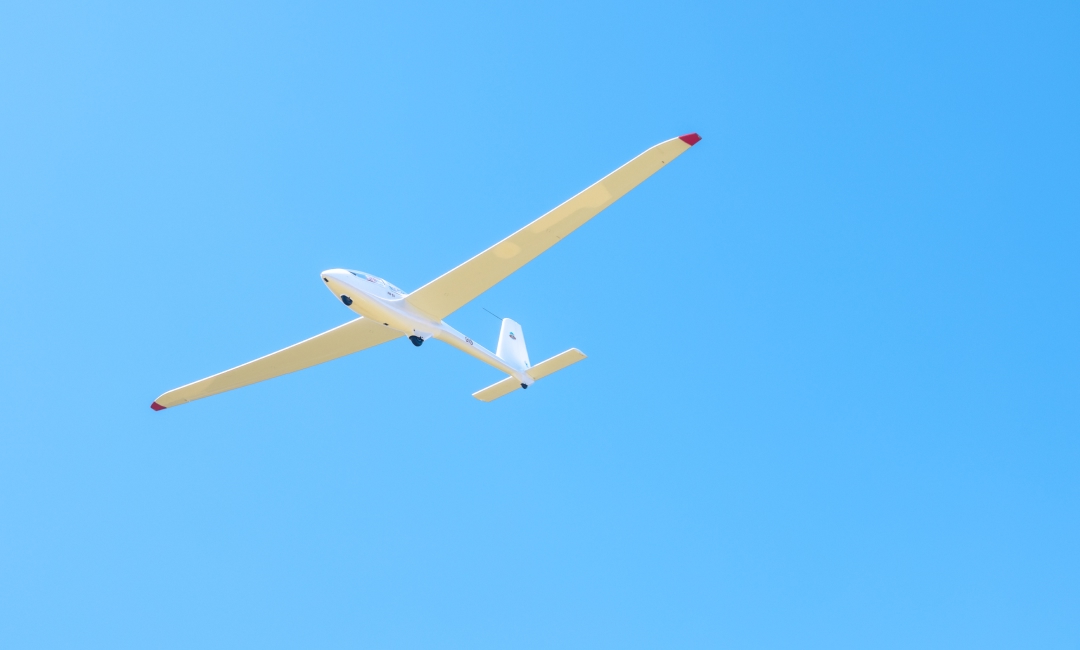
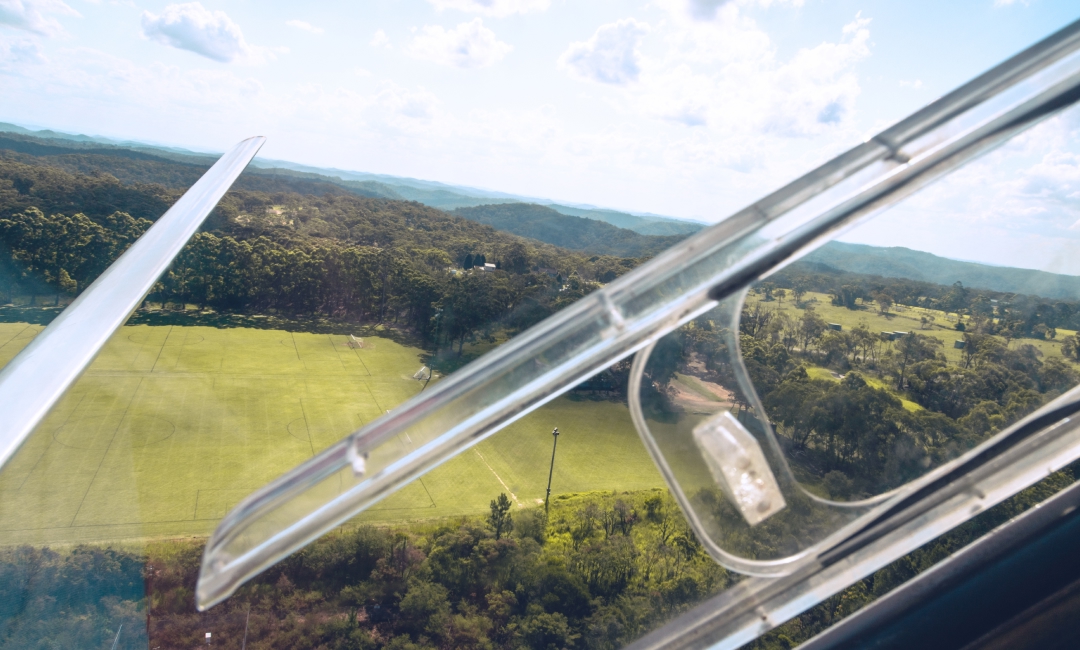

The view across the rich green farming land is spectacular, but it’s the sensation of flight, as we catch a thermal pocket of rising warm air and go spiralling upwards, that thrills and delights.
And then it gets even better as kindly, encouraging Todd suggests I take the stick and hands over the control of the glider to me. Again, this is about 5000 times more adrenaline-zesting than I’d expected my flying experience to be, and it is intimidating at first, but tipping the aircraft to the right and sending us into a long, banked turn - reminiscent of a continuing radius corner tackled in the MX-5 that morning - is an enormous buzz.
I’m more than happy to hand back control to the pilot for what looks like the far more stressful task of coming in to land in a craft with no wheels under its wings in a grassy field.
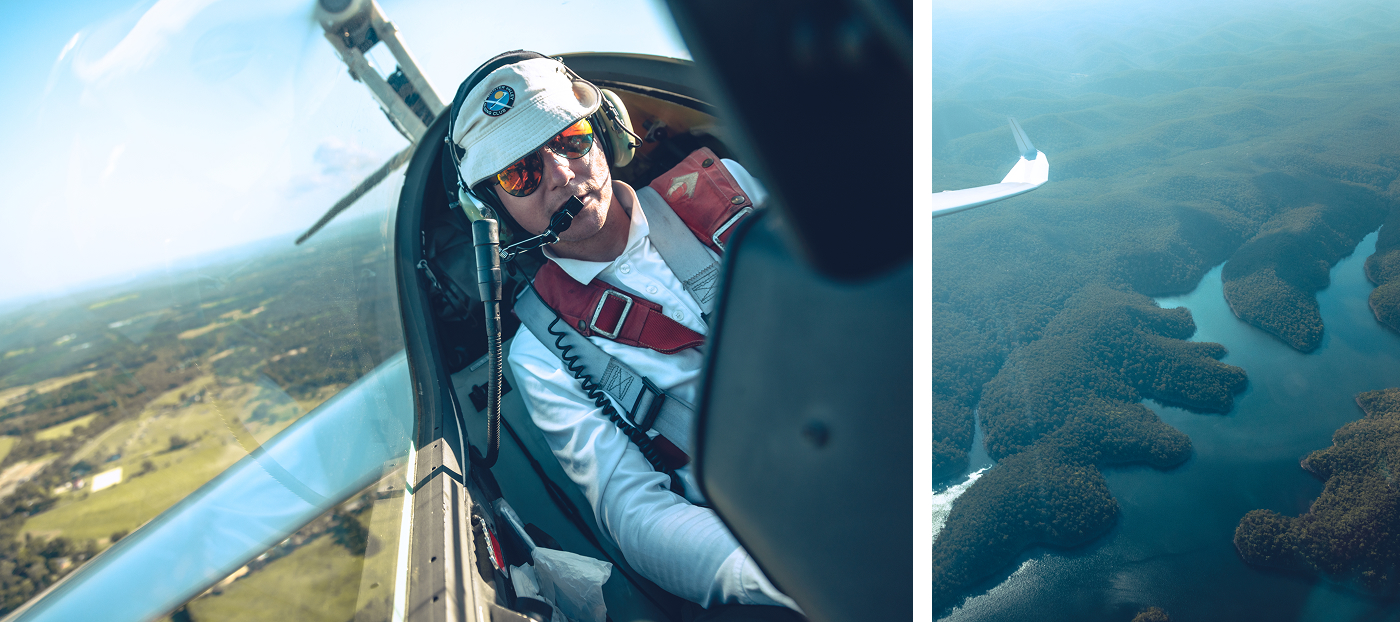
The Central Coast Soaring Club seems to be entirely populated by engaging enthusiasts, with some of them experienced hands and glider owners, and plenty more being keen learners on their way to flying solo.
As Todd, the Club President, explains, the goal here is all about growing a community of like-minded people who love aviation.
“The great myth about flying is that it’s only a sport for the wealthy and you have to be loaded to even start to learn to fly. That’s definitely not the case with gliding,” he says.
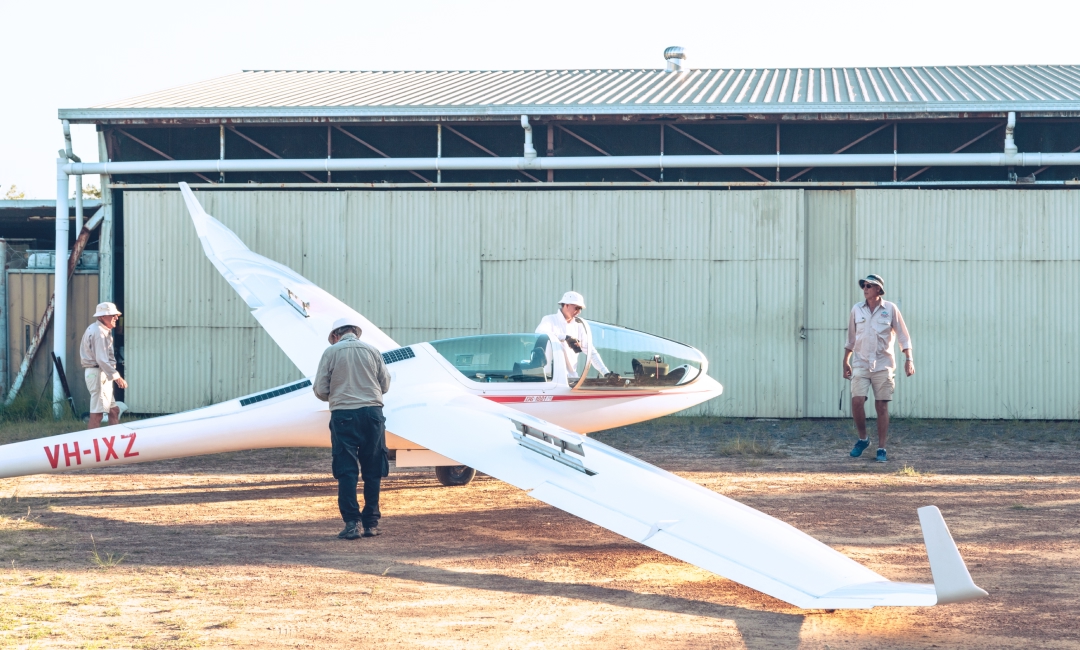
“The fundamental advantage with gliders is that you don’t have the cost and complexity of an engine. Once you are airborne, you use sun’s energy heating the atmosphere to gain height. You could say that gliders are thermonuclear powered.
“The gliders that we have here are either owned by members or by the club. Once you join the club, all of them are available for training or private flight for only $1 per minute. Put this together with the fact that our qualified Instructors are all volunteers and it’s an incredibly affordable form of aviation.”
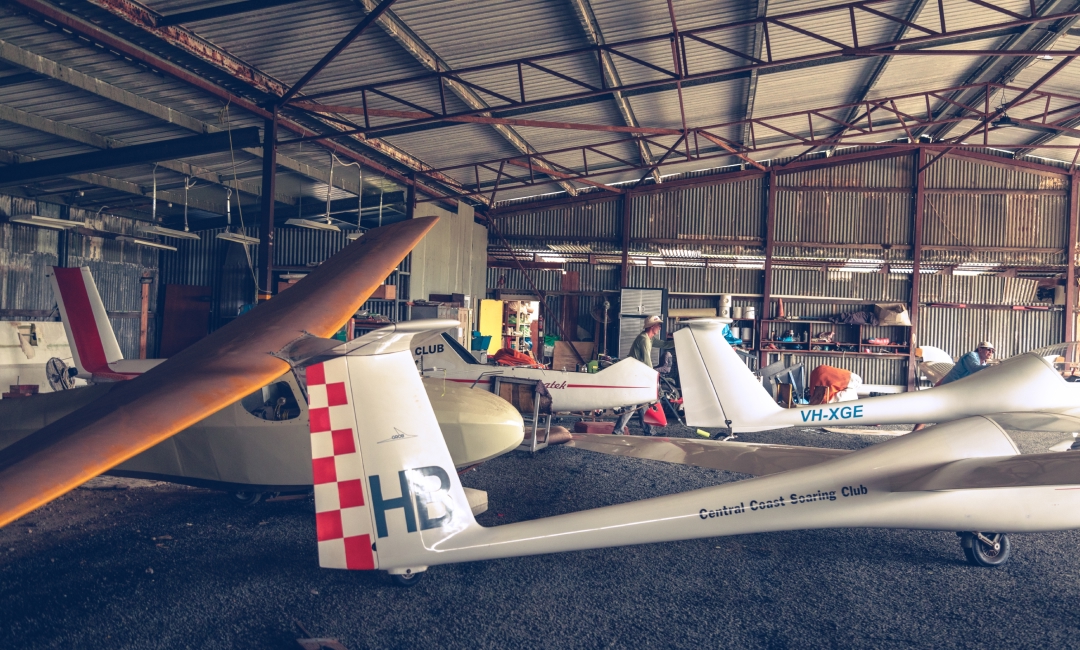
Visitors can also buy a winch-launched Air Experience Flight for just $135.That fee also makes you a member of the Club for 30 days and in that time you can take as many as nine more flights at members’ rates, or just $35 a flight (this also means you could do two flights on your first day for just $170).
“It’s great because people who are curious can have a red hot go without making a long-term commitment,” Todd adds.
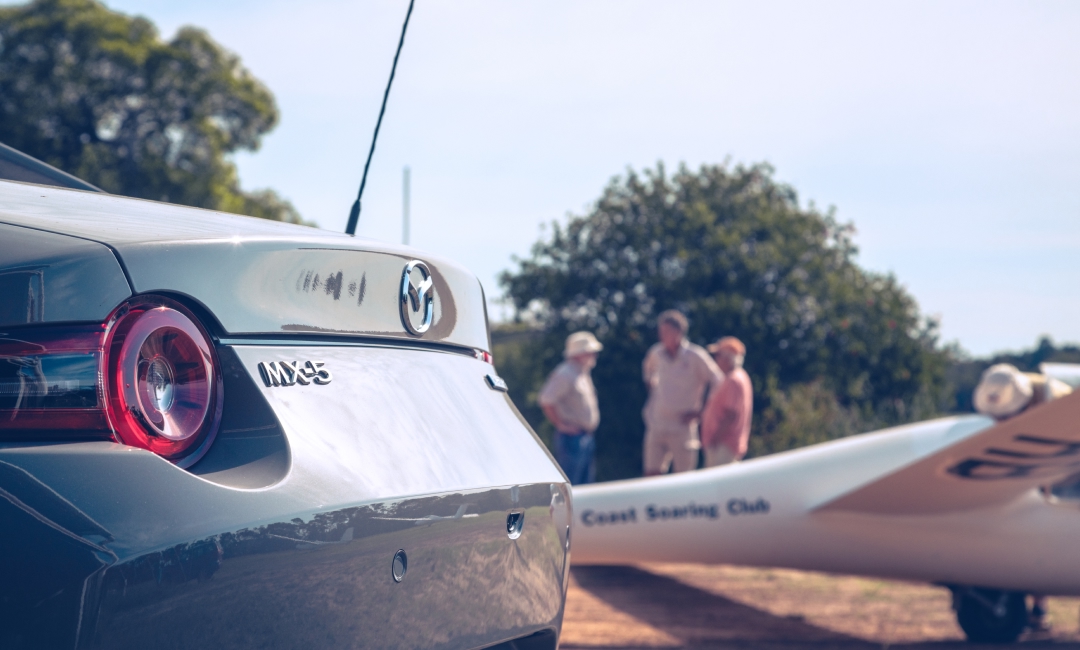
“GIiding is to flying what sailing is to boating. You are totally connected to and reliant on the environment in order to sustain flight. I think it is the most beautiful form of aviation, which does have its share of adrenaline.”
It certainly does, and now that I know about it I’m sending everyone I know to have a go, because it’s just the most incredible, and affordable, experience. Hopefully I can go up there again soon in another Mazda MX-5.